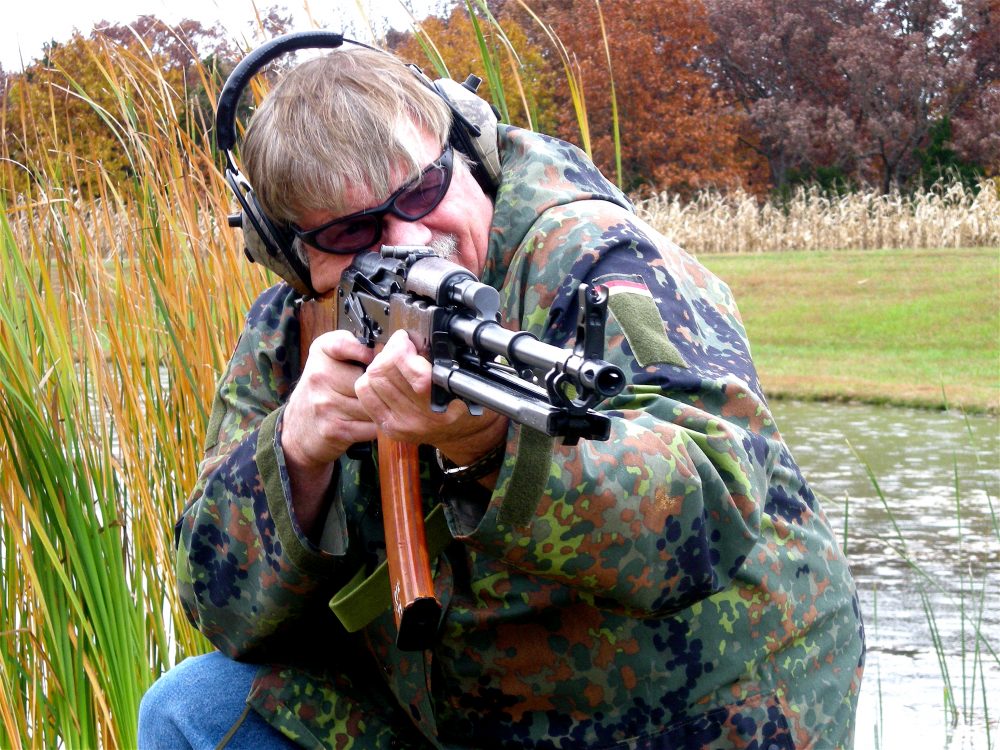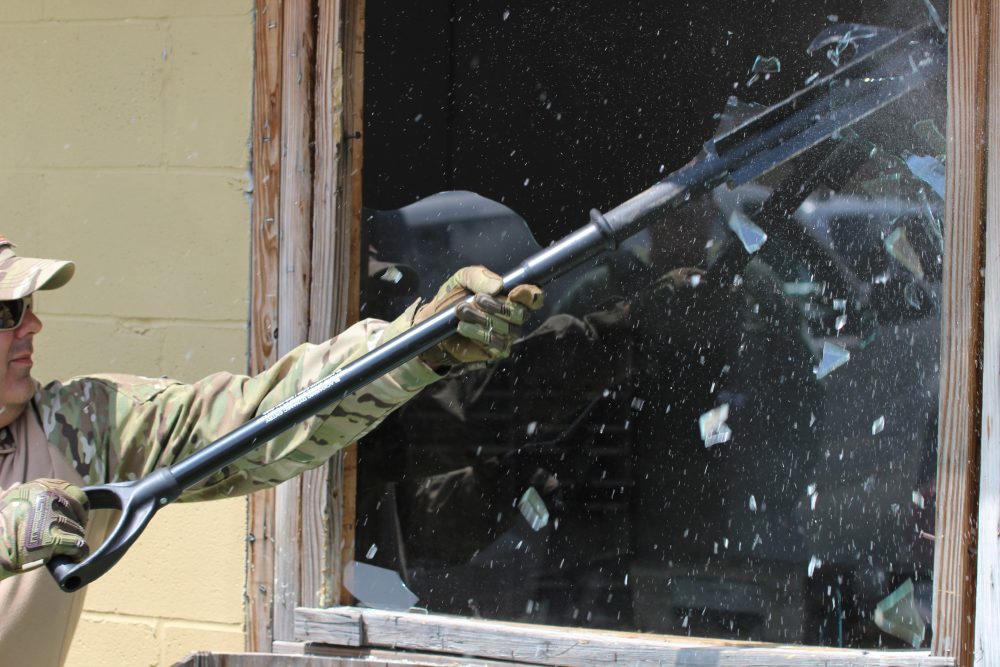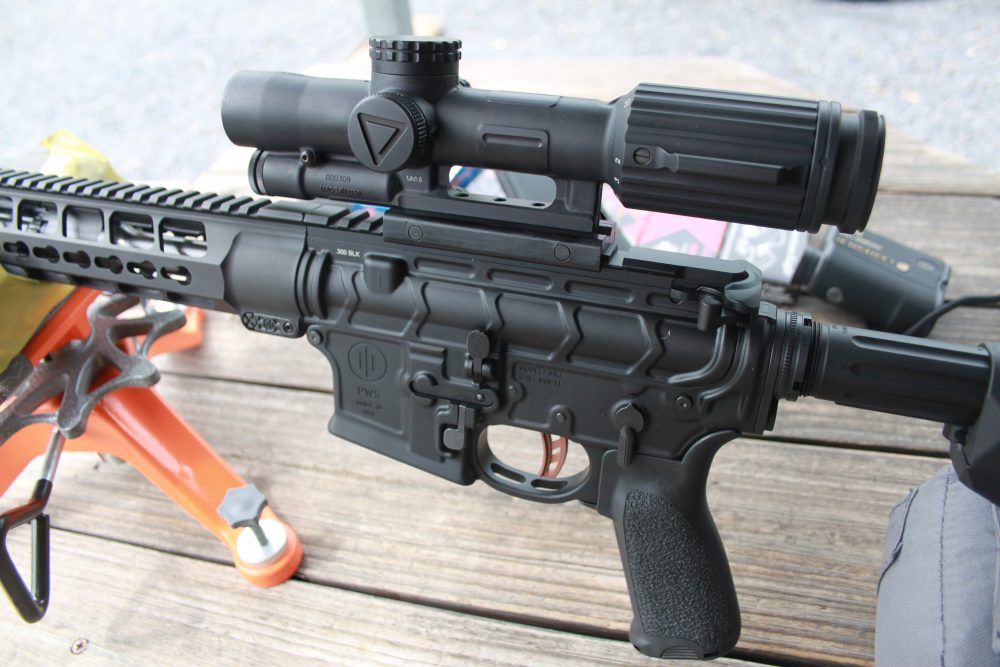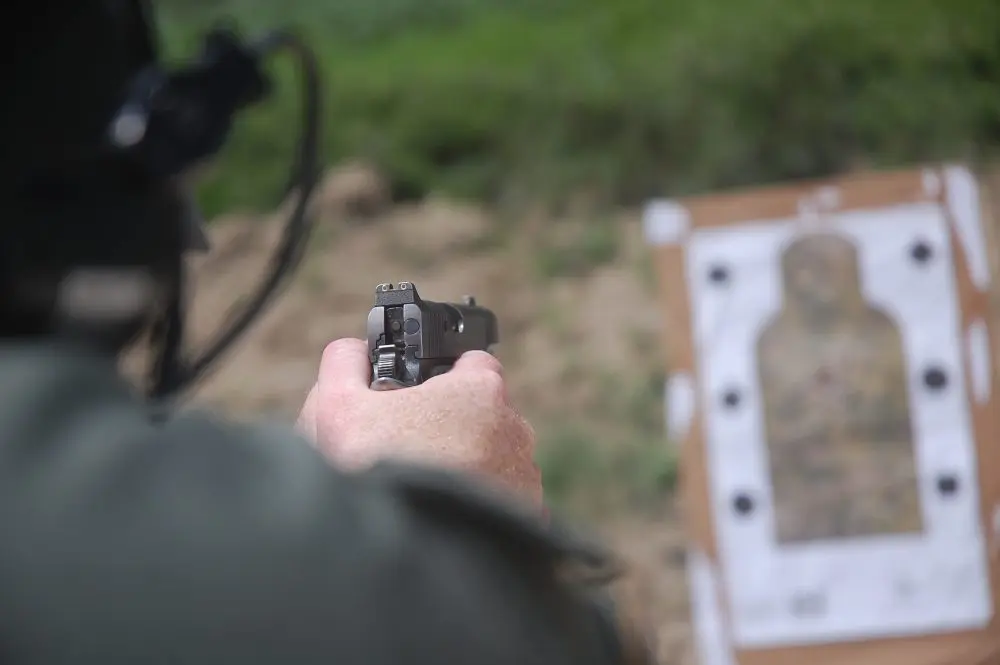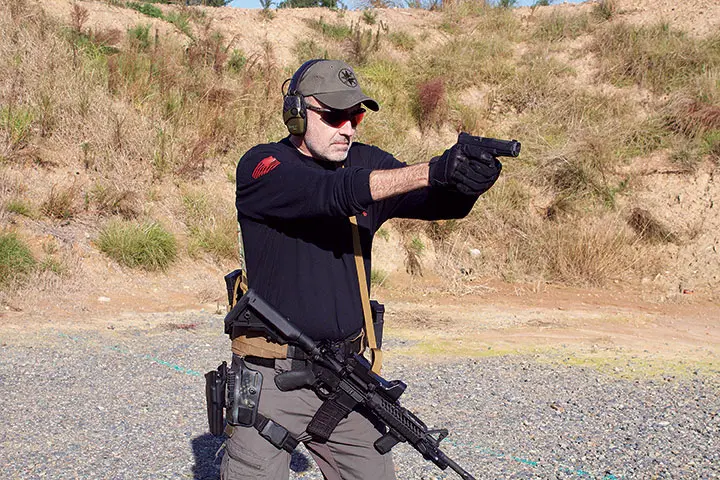The RPK-74 has the odd distinction in the United States of its magazine being better known than the gun itself. That’s because so many photos of Osama Bin Laden show him with an RPK-74 45-round magazine in his AKSU, a choice I should note that does not bespeak a “pro,” since it may look aggressive, but would likely preclude him quickly going prone or handling the weapon well in close quarters.
The original RPK in 7.62x39mm was developed in the 1950s as a companion light machine gun to the AKM and went into service in 1961. It was intended to function as a light support weapon based on the standard infantry rifle in use with Soviet Forces. The designation RPK comes from the Russian for “Hand Held Machinegun of Kalashnikov.”
RPK-74 with distinctive 45-round magazine in place.
The same concept influenced the development of the AUG LSW, Galil ARM, L86A1, and M15 (later M14A1). All of these designs were automatic rifles based on the standard infantry rifle and designed to fill the niche formerly belonging to the BAR or BREN. These weapons did give an infantry squad a bit of extra firepower, but they normally used standard rifle magazines and hence did not have the sustained firepower of a belt-fed or even a drum-fed weapon.
Despite the shortcomings of this type of weapon, the RPK proved extremely popular and has seen service in 40 to 50 countries around the world, ine mostly (but not all) former ComBloc countries. When I received my initial foreign weapons training, the Soviet RPK and DPM were included. Just as the RPK was designed as a companion to the AKM, when the AK-74 was introduced in 5.45x39mm, the RPK-74 was introduced in the same caliber as a light support weapon.
Basic differences between the AK-74 and RPK-74 include that the RPK has a longer, heavier chrome-lined barrel better designed to handle heat, slotted flash hider, buttstock designed for more effective use when firing prone, folding bipod, improved front sight, heavier duty guide rod and recoil spring, different gas block, and 45-round polymer or steel magazine, though the polymer mags are the most prevalent. The RPK-74 will also take standard AK-74 magazines as well.
One advantage of RPK-74 is it’s handy enough to be fired offhand.
In addition to the RPK-74, there is also an RPKS-74 version with a folding stock. Currently, the RPK-74M with black polymer furniture and folding stock is general issue. Normally issued to the RPK-74 gunner along with the machine gun are eight magazines, six 15-round stripper clips, speedloader guide, cleaning kit and rod, and two magazine pouches. With all magazines loaded plus the stripper clips, that gives the gunner a basic load of 450 rounds. The RPK-74 does not have a quick-change barrel, but since it is not a belt-fed design, this will not generally be a problem.
When I was in Russia years ago, I had contacts with some ex-Spetsnaz and VDV (airborne) troops. I found their views of Russian infantry weapons interesting. We did not discuss the RPK-74 a lot, but I remember that their views mirrored mine in that they thought it was effective at a bit longer range than their AKS-74 rifles, plus offered a bit more firepower.
I recall one ex-Spetsnaz emphatically stating that if he were going to lug something heavier than his AKS-74 or AKSU, he’d choose a Dragunov sniper rifle. One ex-paratrooper did speak well of the RPK-74N3, which is designed for use with a night-vision optic.
As always with AKs in my experience, the RPK-74’s sights show some optimism as they are graduated from 100 to 1000 meters, but they remain AK-type sliding tangent sights. I have found, though, that out to 300 meters, the RPK-74 puts the rounds onto silhouette targets intended to simulate an infantry squad. RPK-74M versions have the side rail for an optical sight, which helps a lot and allows the RPK-74 to reach out to at least 500 meters effectively. I believe that the PKS-01 and later PK-AS optics have been used with the RPK-74M, but am not positive.
RPK-74 with bipod folded. Buttstock is well-designed for firing from prone.
Given its limitations, I like the RPK-74. The bipod is not adjustable and seems overly long at first, however, when you use it, you get it. It is designed to allow prone shooting with the 45-round magazine in place. With practice, you can rotate the RPK-74 on the bipod enough to do a prone magazine change, though on certain terrain you have to raise the gun off the ground slightly.
The buttstock is very well designed for use when firing prone and allows the shooter to get behind the gun well. Since it is a 5.45x39mm weapon, recoil is negligible even on full-auto fire. I also find the RPK-74 relatively handy for shooting offhand. At 12 pounds with a loaded magazine, that’s not much more than many battle rifles these days, especially with all the gear that gets mounted on them. In testing the RPK-74, I have tried moving from position to position with the bipod deployed. As long as you are not moving through brush or other heavy growth, it is not a problem.
Maybe it’s because I used to train U.S. military personnel in countering Spetsnaz assassination teams, but I have always been very interested in Russian infantry weapons. They are generally very utilitarian and well designed for Russian troops and Russian missions.
The RPK-74 is not a great machine gun—and certainly isn’t in the same league as the U.S. M249 SAW—for giving sustained firepower to break an attack or cover an immediate action drill. It does, however, offer the Russian small unit extra firepower and range in a relatively handy package.


